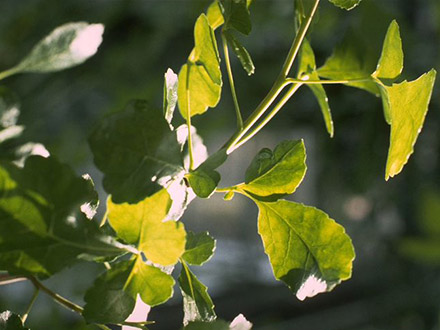Botanical name
Commiphora myrrha (T. Nees) Engl.
Family
Burseraceae
Common name
Common myrrh, Gum myrrh, African myrrh
Information about the plant
Commiphora species are native to the arid regions of tropical and subtropical Africa and the Arabian Peninsula. Some species are also found in Madagascar and the Indian subcontinent. These are shrubs or small trees with sharp thorns and small flowers that sprout in panicles at the ends of their branches. Myrrh probably derives from different types of Commiphora, but it is unclear from which shrub myrrh is obtained, as other Commiphora species also secrete gum resin. Commiphora myrrha is the main source of myrrh.
Medicinally used parts of plants (herbal drug)
Myrrh is the exudate of the myrrh bush. It is formed in resin ducts in the bark and exudes as a liquid gum resin, either spontaneously or after damage to the bark. When exposed to air, the resin solidifies into irregular, orange-brown pieces. To obtain the myrrh, the bark is cut after the rainy season from June to August, and the hardened myrrh resin is collected.
The commercially available drug comes from collections in Sudan, Yemen, Eritrea, and Somalia.
Constituents of the herbal drug
Myrrh is a gum resin consisting of an alcohol-soluble resin fraction (diterpene and triterpene acids) and a water-soluble gum fraction of carbohydrates. The pleasant scent is caused by its essential oil.
Quality of the drug
The quality of the following drugs or drug preparations is specified in the European Pharmacopoeia (Ph. Eur.):
- Myrrh (Myrrha)
- Myrrh tincture (Myrrhae tinctura)
Medical applications
Recognised medical use
The HMPC has classified myrrh as a traditional herbal medicinal product (see “Traditional use”).
ESCOP: for inflammation of the gums and stomatitis (aphthous ulcers); mild skin inflammation, minor wounds, and skin abrasions; supportive treatment for pharyngitis (sore throat) and tonsillitis.
Traditional use
Myrrh has been classified by the HMPC as a traditional herbal medicinal product (Article 16a of Directive 2001/83/EC). Based upon long-standing use, myrrh tincture can be used to treat small ulcers and inflammations of the oral mucosa (stomatitis, gingivitis) as well as minor skin wounds and small boils.
Herbal drug preparations in finished dosage forms
Myrrh is preferably used in the form of a tincture (myrrh tincture).
Dosage
Apply undiluted myrrh tincture with a brush or cotton swab 2 to 3 times a day or add 5 - 10 drops to a glass of water and rinse your mouth or gargle.
Notes
Myrrh tincture must not be used by people suffering from alcoholism. Boiling on the face requires medical treatment.
No safety studies are available on the use of myrrh during pregnancy and lactation. Its use in children under the age of 12 is not recommended due to a lack of evidence.
Side effects
None known.
Interactions
None known.
References
Herbal drug monographs
HMPC (2011, 2018), ESCOP (2014), WHO Vol. 3
Further literature
Commentary on the European Pharmacopoeia (Myrrh, No. 1349; Myrrh tincture, No. 1877)


